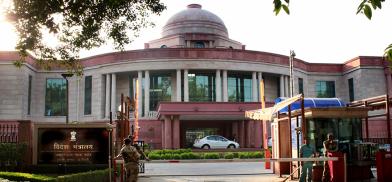Foreign office revamp augurs well for Indian diplomacy
India's Ministry of External Affairs (MEA) has undertaken a major overhaul of its departments and reporting structures that are designed to inject better coordination and implementation of policies. This was announced in end January, within a day of Foreign Secretary Harsh Vardhan Shringla assuming office. The prime objective of the exercise appears to be to rationalise the ministry’s functioning and provide more time to the Secretaries, four in addition to the Foreign Secretary, to focus on policy formulation and strategisation. In an address to MEA officers, External Affairs Minister S Jaishankar said the restructuring was designed to take some load off the shoulders of the Secretaries who are “overburdened and overworked.”The major revamp encompasses the creation of seven pillars, each headed by an Additional Secretary (AS) who would deal with specific segments related to horizontal policy/thematic issues, as well as different geographical/territorial areas.

India's Ministry of External Affairs (MEA) has undertaken a major overhaul of its departments and reporting structures that are designed to inject better coordination and implementation of policies. This was announced in end January, within a day of Foreign Secretary Harsh Vardhan Shringla assuming office. The prime objective of the exercise appears to be to rationalise the ministry’s functioning and provide more time to the Secretaries, four in addition to the Foreign Secretary, to focus on policy formulation and strategisation. In an address to MEA officers, External Affairs Minister S Jaishankar said the restructuring was designed to take some load off the shoulders of the Secretaries who are “overburdened and overworked.”The major revamp encompasses the creation of seven pillars, each headed by an Additional Secretary (AS) who would deal with specific segments related to horizontal policy/thematic issues, as well as different geographical/territorial areas.
Akhilesh Mishra, who was till now handling the cultural portfolio as Director General, Indian Council for Cultural Relations (ICCR), is now head of the Development Partnership Division with three Joint Secretaries (JS) reporting to him. This portfolio is key to India’s expanding role as a development partner, particularly in countries in its neighbourhood and Africa. Earlier, all JSs reported directly to Secretary (Economic Relations). Dinesh Patnaik has taken over as head of ICCR and is responsible for expanding the Indian footprint in the vital sphere of soft power.
Suresh Reddy, AS (Multilateral Economic Relations: MER) will take over as AS (Europe), a post created for the first time. MEA has two JSs for Europe – Europe West and Central Europe. India needs to conduct its relations with Europe in a comprehensive manner, particularly after Brexit, while keeping a focus on collaboration across sectors from trade, investment, innovation, technology and security to mobility of professionals.
Nagma Malik who was AS (Policy, Planning & Research: PPR), has been designated AS (Africa), a new post by which she will direct India’s Africa policy as it prepares to host the fourth India-Africa Summit in September, 2020. Africa, like Europe, was handled by two JSs, while another JS handles North Africa and West Asia, or the WANA division.
Neena Malhotra, till now AS (Eastern and Southern Africa), will head the Indo-Pacific division, in charge of Indo-Pacific, Indian Ocean and East Asia Division. She takes over from Vikram Doraiswami, also an AS, who will now handle all international conferences and multilateral organisations. This is a heavy desk because, besides the India-Africa Summit and SCO heads of government meeting this year, India will host the BRICS summit in 2021, the G-20 summit in 2022 and SCO Summit in 2023.
Vikas Swarup, Secretary (West) has been entrusted with the additional task of overseeing MEA’s media outreach, taking advantage of his earlier experience as ministry spokesperson. Sanjay Bhattacharyya, Secretary (Consular, Passport, Visa and Overseas India Affairs) will also oversee the Gulf and WANA divisions. The additional charge recognises the significance of 8-9 million Indians in this region who contribute about 60% of total remittances entering India annually and account for almost 25% of global Indian diaspora.
By introducing a rung of Additional Secretaries, akin to political directors in other foreign offices, it is expected that a considerable load of the routine work will be taken off the Secretaries’ tables giving them greater freedom to contribute more to policy conceptualisation. An uncomfortable situation often experienced in the MEA thus far has been that, even after promotion from a JS to an AS, the officer might still continue to discharge a JS’s responsibilities as head of a division. This untenable situation will likely cease to exist after the new instructions are implemented.
Introducing a line of responsibility, equivalent to political directors in other foreign ministries, would ease protocol issues of determining exact counterparts in other foreign ministries. MEA launched another path-breaking initiative this year with the establishment of the New, Emerging and Strategic Technologies (NEST) Division. This is a tacit recognition of the important role that technology plays in modern-day diplomacy. These initiatives augur well for the success of Indian diplomacy in the coming years.
(The writer is a former Ambassador)









Post a Comment